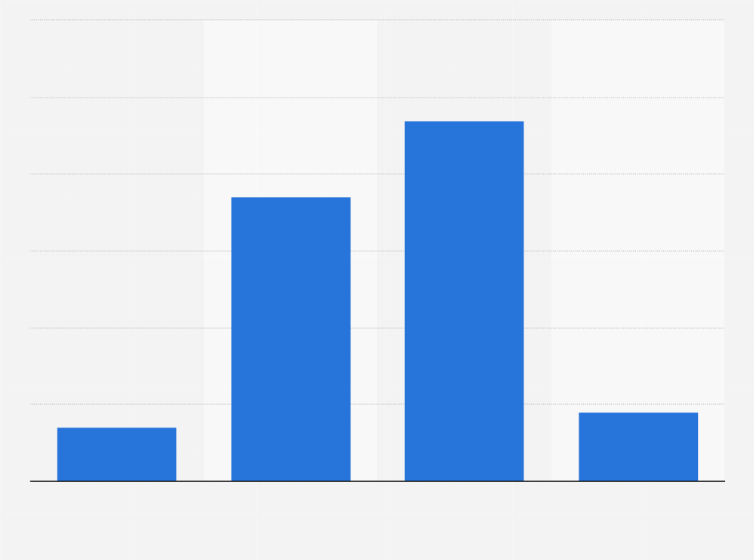Parenting(Age 5 to 8) | Academic | General | Parenting(Age 9 to 12) | Parenting(Age 13 to 16) | Jun 16, 2021
Statistics of Kids Learning Online In The Year 2021

Online learning is a technique of studying which takes place virtually and not physically. Students take courses online instead of going to the classroom and physically attending it. Over time, education has been confined to the four walls of the classroom, with a traditional teaching schedule and uncomfortable sitting positions. Online Learning, which is also known as E-learning, is more flexible than physical learning. Many people find online learning and degrees to be less effective but it is becoming increasingly popular among children.
But a recent study was taken by SRI International (on behalf of the US Department of Education) that students are performing better in online learning than when they were receiving face-to-face education. The biggest advantage that online learning has brought to children’s life is that it is more flexible which means students can study when they want to, where they want to and how they want to. But this doesn’t mean that the workload is any less than physical learning. Because of this flexibility, online learning is very popular, and mature-aged children also appreciate it because they have other commitments.
Online learning is similar to physical learning because it follows a similar pattern. Other aspects of online learning are unique: interactive videos, PowerPoint presentations, assessments, video conferencing, and forums.
Must-Know Online Learning Statistics in 2021
It has long been assumed that eLearning will eventually overtake the traditional education system. However, with the outbreak of the global pandemic, this schedule has been accelerated earlier than intended. As a result, evaluating the differences in the adoption of eLearning methods through time is remarkable.
Online learning is one of those growing top trends which are popular in this digital age. With its tremendous growth and no signs of falling back, it is growing rapidly in this digital world. Kids nowadays are known as the digital generation living in the world of smartphones, tablets, and computers. Some general stats that have been highlighted are:-
❖ In 2018, 21% of private schools and 13% of public schools at least provide one online learning course but as of 2021, 75% of the schools are planning to operate online classes.
❖ 57% of all U.S. students were fully equipped with digital tools. In this, 45% of the students were of the elementary standard, 64% were of middle school, and 63% were high school students.
❖ In 2021, the use of remote management apps for educational purposes has increased by 87% globally.
❖ Since the birth of the global industry, it has increased by 900% and between 2020-2025, the online learning market is set to experience an increase by 200%.
❖ 80% of schools have purchased or are planning on buying additional technology for students and online learning.
❖ With the rise of online learning, student device usage has been found out to be 40% that is spent on educational platforms. The utilization of cooperation applications has likewise expanded by 141%.
❖ From 2020 to 2025, the Asia-pacific area will arise as the quickest developing business sector in MOOC. Also, MOOC forecasts a 29 percent yearly increase in the market.
❖ Furthermore, massive open-source online courses (MOOCs) are becoming more popular, ensuring that MOOCs provide professional content and high-quality education.
❖ In comparison to the traditional methods of studying, the top 10 institutes saw a 10% increment in students being enrolled in online learning.
❖ With the inauguration into booked learning, the independent online market will probably decrease to $33.5billion in 2021. This is regardless of whether the American Government has bought independent items worth $2.59b in 2019.
❖ As per administrators, up to 70% of online courses can be undertaken without any prior training.
❖ In 68 percent of high-income districts, full-time classrooms were offered, but only in 36 percent of low-income schools.
❖ 75 percent of US universities plan to function mainly online by 2021.
Regarding the effects of the pandemic on children's education and changes to online/distance learning, a U.S. Census Bureau survey of the population 18 years and older with children in public or private schools was done in February 2021 of the population 18 years and older with children in public or private schools:
➔ 4 million students said that their classes had been converted to a distance learning approach using online resources.
➔ 7 million people said they used paper materials delivered to home as part of their distance education.
➔ 4 million people stated that classes had been canceled.
➔ 8 million people said their lectures had been rearranged in some way.
➔ COVID-19 did not affect how their children were educated, according to 5 million parents.
Online Learning Effectiveness
Students can take advantage of online classes. The percentage of students taking online courses has increased and is still on the rise. Due to the pandemic, an increasing number of students and adults have enrolled in online courses. Studies have shown that in 2017, out of 5
million undergraduate students, only 19 percent of the students have taken up online courses. In the pre-Covid-19 period, online learning was flourishing however not received generally. Because of the Covid-19 pandemic, online learning has taken off, and it is quite possibly the most famous pattern around the world. It was noticed that study materials in physical classes were retained 8-10 percent as compared to the online classes, study material can be retained by learners to up to 25-60 percent. The unexpected pandemic forced the closure of all schools around the world. This tremendously impacted the education sector. Online learning is clearly becoming more prevalent in our daily lives. When combined with other techniques, it accelerates the learning process.















Post a Comment: